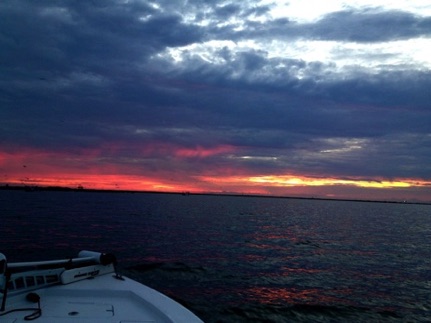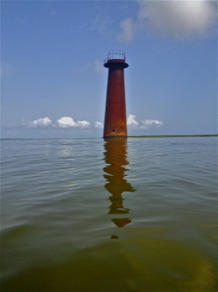Venice, Louisiana
Venice, Louisiana is a very unique and extraordinary saltwater fishery. Located at the conclusion of the Mississippi River, nutrients and freshwater from 31 US states meet the saltwater of the Gulf of Mexico. The silt carried down the river and deposited in the Louisiana delta originates from some of the most fertile soils in America, setting the foundation for one of the richest estuaries known to man. Within this protective sanctuary, species flourish and ultimately bolster an amazing fishery.
As the Mississippi River reaches Venice, Louisiana, it branches into several major passes with hundreds of small bayous and canals leading into coastal bays and ultimately the Gulf of Mexico. The complexity of this system not only provides some of the finest fish habitats, but also many options for fisherman under a variety of conditions.

As we depart Venice Marina in the pre-dawn light, the rising sun will light up the roseau cane lined banks. Interspersed in this vast field of cane are willow lined ridges and cypress lined swamps. This area is home to a plethora of wildlife including numerous species of birds, nutria rats, alligators, deer, hogs, and coyotes. Even cattle are ranched in the lower delta!
As we enter the coastal bays, we will be confronted with hundreds of cane lined points, islands, and even beaches emerging from the fertile waters. Baitfish shower in the air, birds dive on flicking shrimp and trophy sized speckled trout and redfish impatiently wait below. At this point, we are faced with our hardest decision...where should we start?
Being on the water nearly every day during the fishing season, Captain Brandon will know exactly where to begin. His decision will be based upon the season of the year, weather conditions, history, and finally that instinct that all great guides possess. In the spring, the muddy outflow of the mighty Mississippi will keep the fish stacked up in the interior of the outer bays. This area of the bay provides them with abundant food but also protects them from the sometimes harsh weather of early spring. At this time guests will primarily fish points, coves, and ditches draining interior duck ponds. As spring meets summer, the weather moderates and the fish push further out to the perimeter seeking salinity levels which allow for a successful spawning season. At this time, the beaches, exterior points, and even oil and gas production platforms come into play. Once the spawning season concludes, usually in September, Speckled Trout and Redfish begin their migration into the interior marshes and even main channel of the river. Years in which the river levels remain extremely low, the interior migration may even begin sooner.



